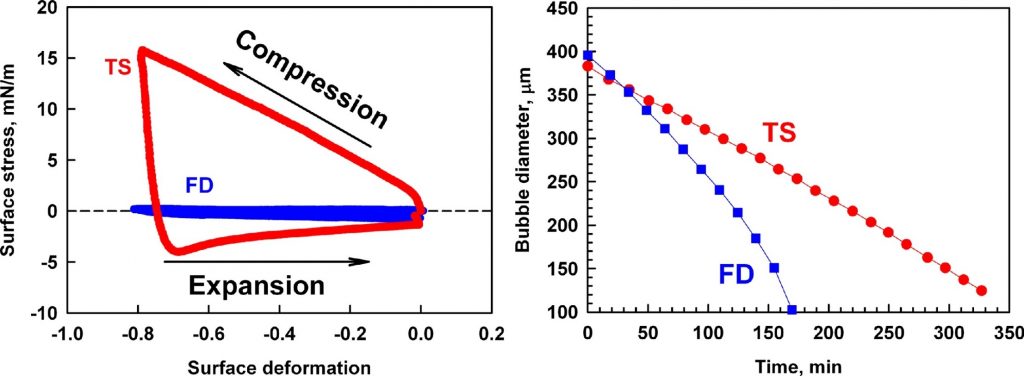Role of surface properties for the kinetics of bubble Ostwald ripening in saponin-stabilized foams

Bubble Ostwald ripening (OR) leads to a gradual increase of the mean bubble size in foams with time. The rate of OR can be reduced significantly or even arrested completely using appropriate solid particles and/or surfactants as foam stabilizers. In the current paper, we show that saponins, a widespread class of natural surfactants, can reduce significantly the rate of OR in foams. To reveal the reasons for the reduced rate of OR in saponin-stabilized foams, we performed measurements of the rate of bubble diminishing, for single air bubbles placed below a solution surface, with a series of saponin bio-surfactants. These saponin surfactants form adsorption layers with surface elasticity, spanning a very wide range – from almost zero up to several thousand mN/m. The measured rate of bubble OR showed no correlation with the surface elastic modulus (dilatational or shear), as measured at 0.1 Hz frequency of surface oscillations. A reasonable correlation was observed only with the surface stress (deviation from the equilibrium surface tension), measured at very slow rate of surface deformation, which mimics much better the actual processes of bubble OR in foams – higher surface stress corresponds to lower OR rate. New theoretical expression, accounting for the out-of- equilibrium surface tension during bubble shrinkage and for the gas flux across the meniscus regions surrounding the foam films, was derived and used to calculate theoretically the rate of bubble diminishing. The comparison of the theoretical predictions with the experimental data shows clearly that the main reason for the reduced rate of OR in the studied systems is the high resistance to gas transfer of the saponin adsorption layers. The deviations from the equilibrium surface tension, although noticeable, have smaller effect. The complementary experiments with actual foams showed that the rate of OR is even lower (compared to the rate measured with single bubbles) which is explained with the thicker non-equilibrium foam films, formed between the neighboring bubbles in saponin-stabilized foams.

